Nile Cruise - Once In A Lifetime
January 2008 by Kathi Jacobs
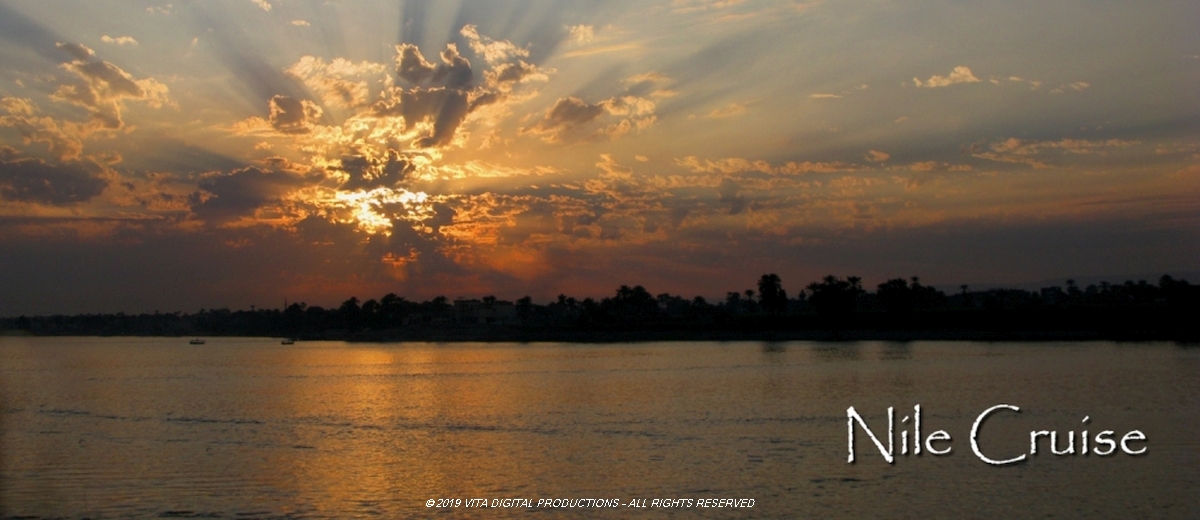
For the past 7 nights, we've had a wonderful time cruising the Nile River, the longest river in the world. Silt deposits from the Nile made the surrounding land fertile because the river overflowed its banks annually. The Ancient Egyptians cultivated and traded wheat, flax, papyrus and other crops around the Nile. Wheat was a crucial crop in the famine-plagued Middle East. This trading system secured Egypt's diplomatic relationships with other countries, and contributed to economic stability. Far-reaching trade has been carried on along the Nile since ancient times.
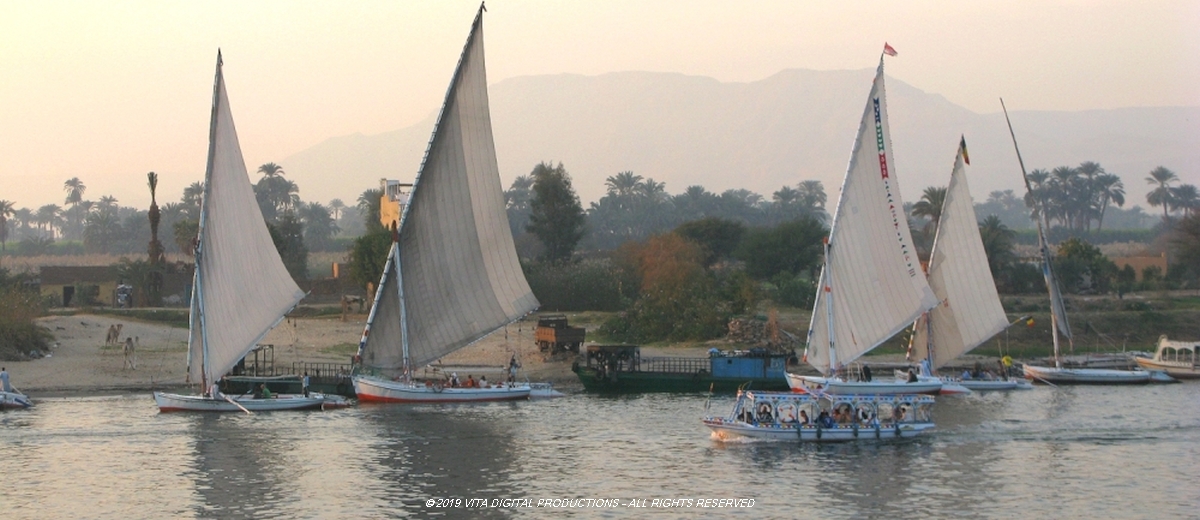
Most of the population and cities of Egypt lie along those parts of the Nile valley north of Aswan and nearly all the cultural and historical sites of Egypt are found along riverbanks.
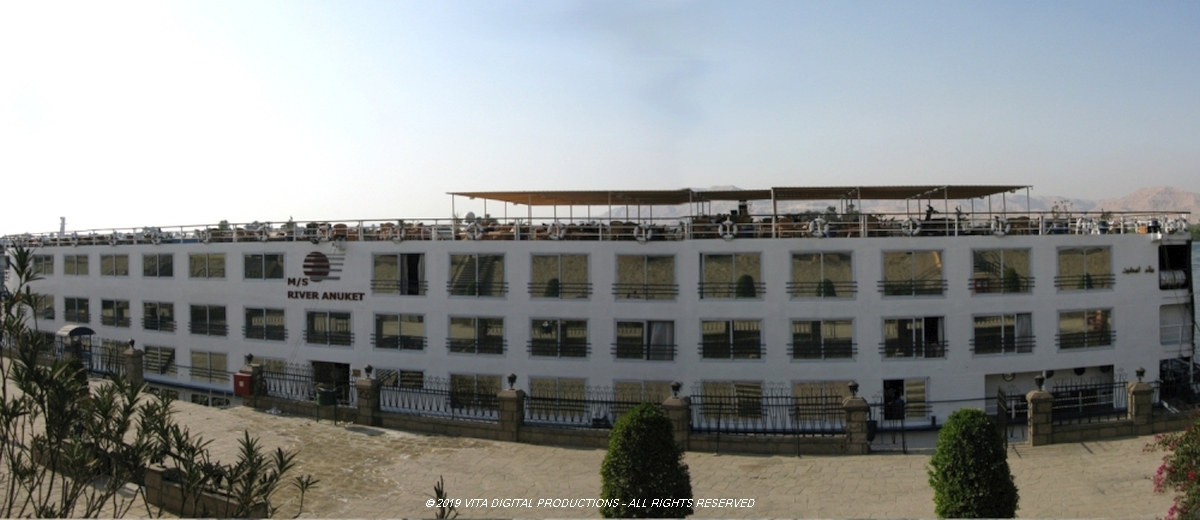
Our home for the cruise was the MS Anuket, a really beautiful boat with a friendly and attentive staff and crew. There were always smiling faces to greet us and send us off, and great attention was paid to details throughout the boat. With five decks and a passenger maximum of 134 passengers, each of us was properly spoiled all along the way!
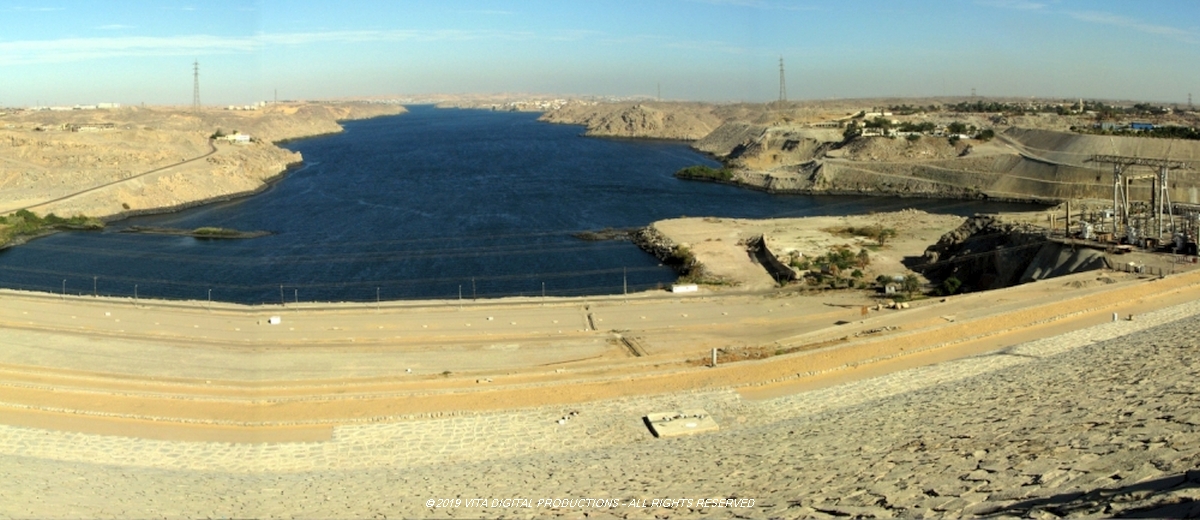
Friday, 4 January - We had an early departure this morning to fly from Cairo to Aswan. When we arrived in Aswan, there was a brief tour of the High Dam at Lake Nasser. The English, when they were the occupying force in Egypt in the early 1900s, built the British Dam. It served its purpose at the time, but soon Egypt's population had outgrown the water supply. The Aswan High Dam was built in the 1960s and has the ability to control flooding better, provide increased water storage for irrigation, and generate hydroelectricity pivotal to Egypt's planned industrialization. The High Dam has had a significant effect on both the economy and culture of Egypt.
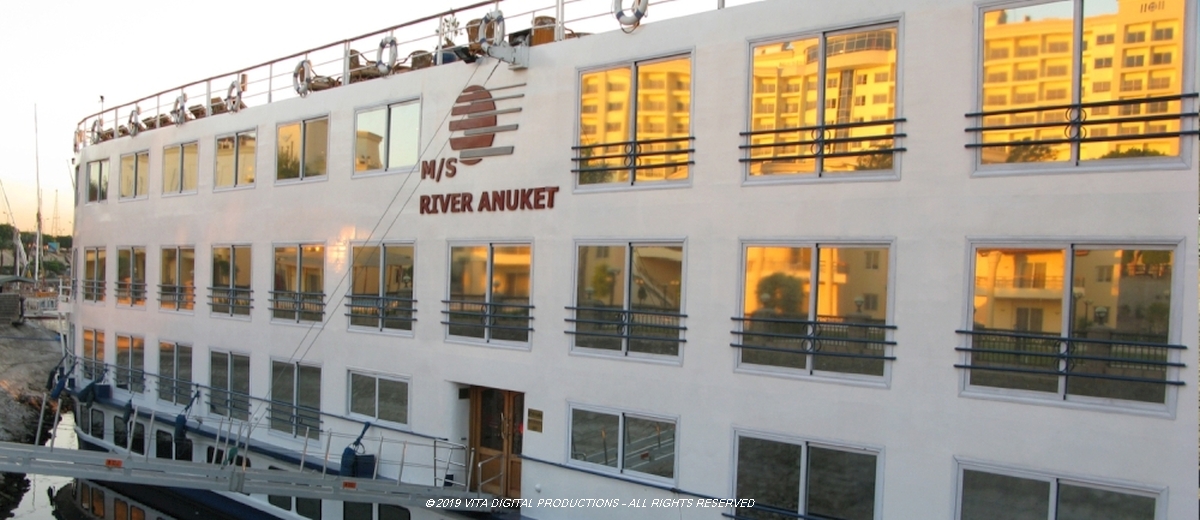
We boarded our boat in time for lunch and that – as well as all other meals – was excellent! There were two executive chefs on board this 5-star vessel and a host of young waiters with energy and a good sense of humor.
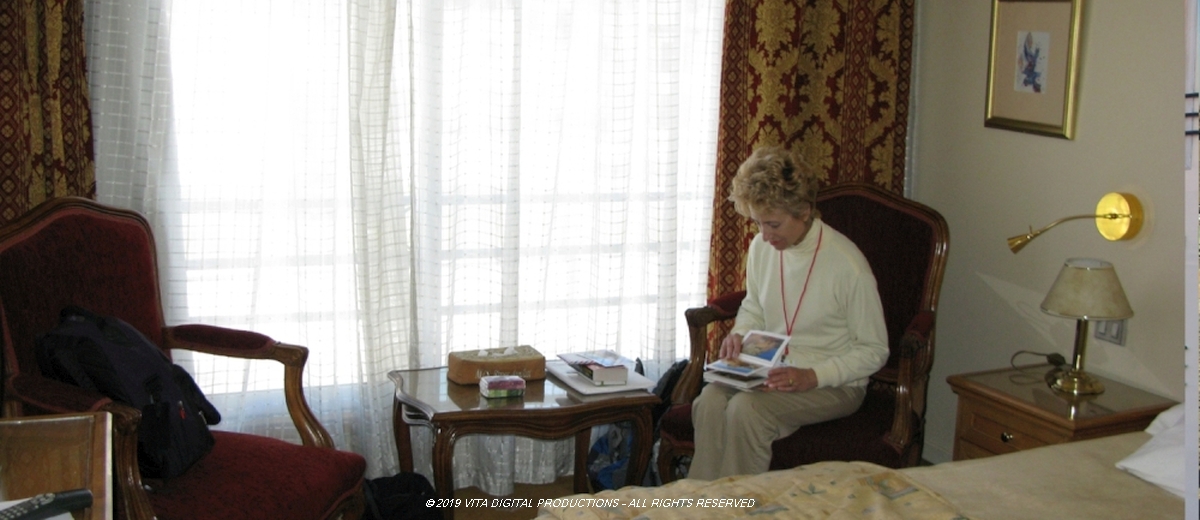
The pace while we were actually on the river was quite relaxed. As much as we had enjoyed our time in Cairo, there was always so very much to see and do that the time on the cruise offered a welcome respite. Our cabin, #302, was located on the Lounge deck. Large sliding glass doors with unobstructed views were a nice feature to these rather spacious cabins. A good overall layout and a steward most willing to please made the Anuket a pleasurable craft.
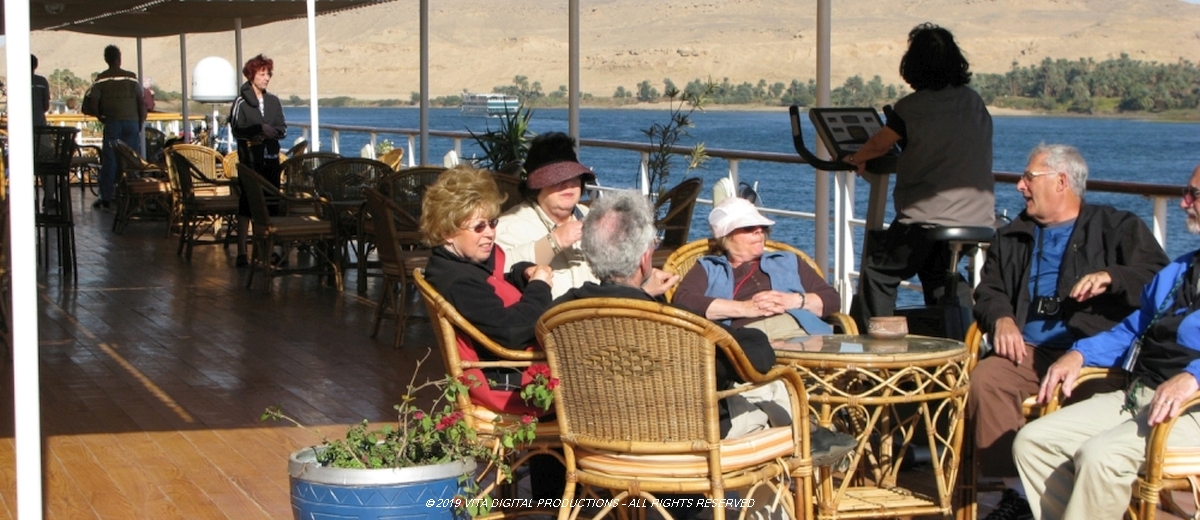
Our group (all 4 busloads) took over the whole boat for the week, so we had a chance to converse and enjoy meals together.
Our itinerary was demanding and ambitious, but we saw many wondrous sights. The first port on the cruise was the island of Philae. During the Victorian era in England, Egypt was part of the Grand Tour and certainly this spot would have garnered great interest by those Europeans. A quote attributed to Amelia Edwards in the 1870s describes the site just as I remember it:
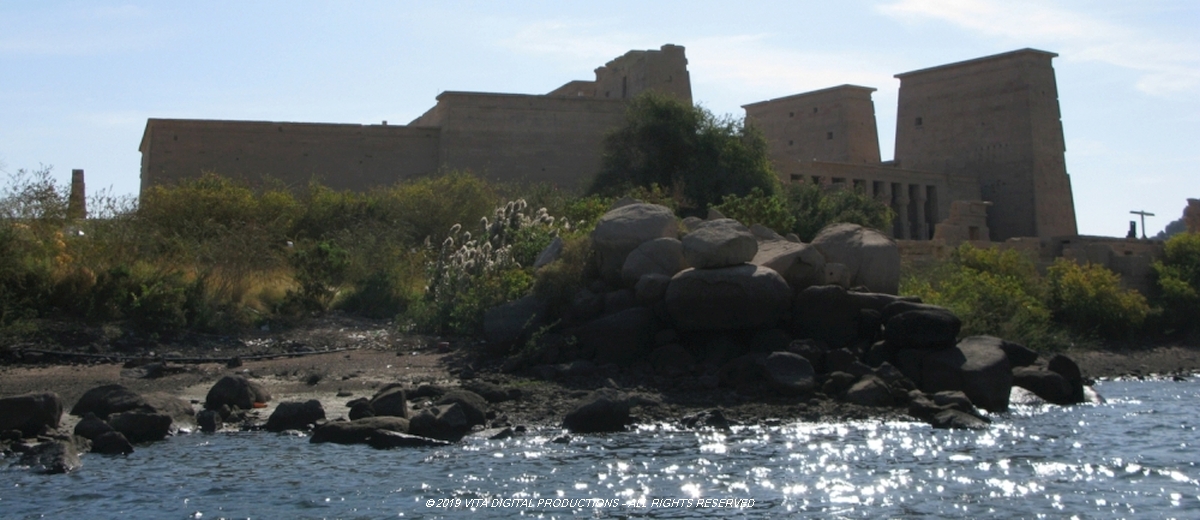
“The approach by water is quite the most beautiful. Seen from the level of a small boat, the island, with its palms, its colonnades, its pylons, seems to rise out of the river like a mirage. Piled rocks frame it on either side, and the purple mountains close up the distance. As the boat glides nearer between glistening boulders, those sculptured towers rise higher and even higher against the sky. They show no sign of ruin or age. All looks solid, stately, perfect. One forgets for the moment that anything is changed. If a sound of antique chanting were to be borne along the quiet air–if a procession of white-robed priests bearing aloft the veiled ark of the God, were to come sweeping round between the palms and pylons–we should not think it strange.”
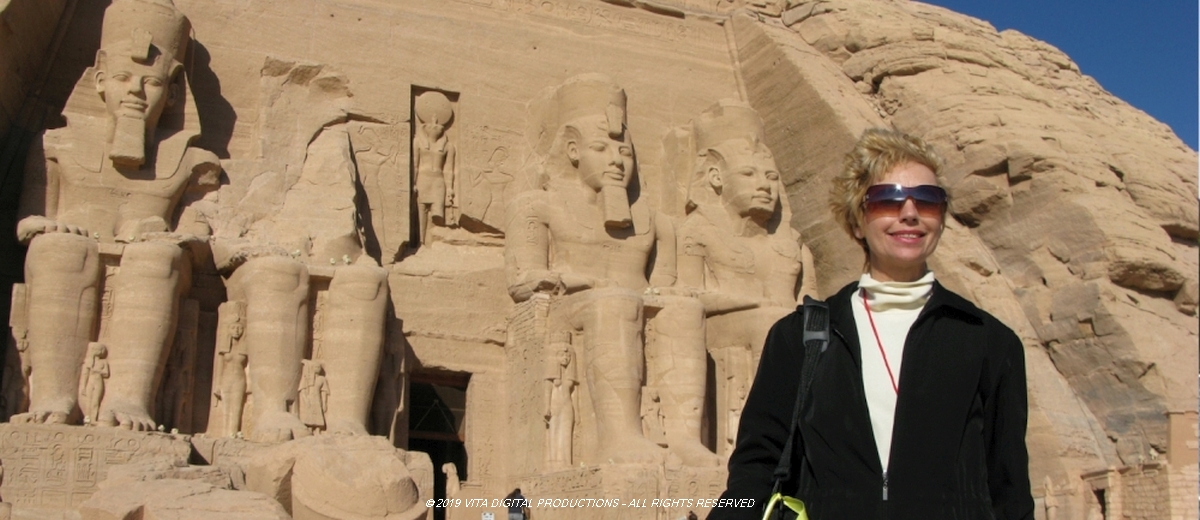
Our next visit involved a short flight to Abu Simbel, with temples carved right into the mountain by Ramesses II for himself and his most favored wife, the beautiful Nefertari. Located at the second cataract of the Nile River, the two temples which comprise the site (The Great Temple and The Small Temple) were created during the reign of Ramesses II (c. 1279 - c. 1213 BCE.) With the passage of time, the temples fell into disuse and eventually became covered by sand. By the 6th century BC, the sand already covered the statues of the main temple up to their knees.
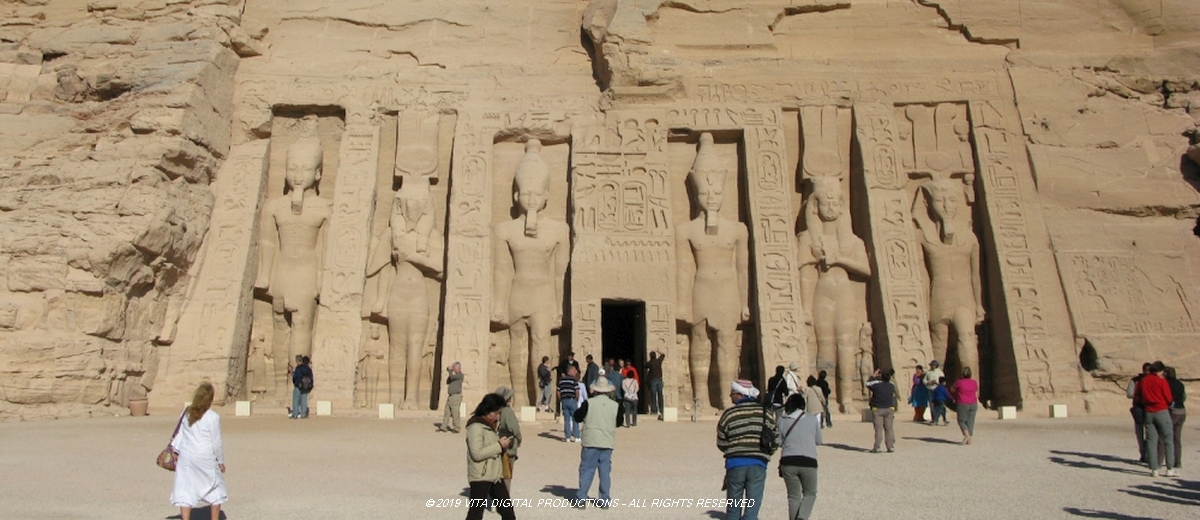
The temple was forgotten until 1813, when Jean-Louis Burckhardt found the top frieze of the main temple. Burckhardt talked about his discovery with Italian explorer Giovanni Belzoni who, in 1817, this time succeeded in his attempt to enter the complex. In 1959 the southernmost relics of this ancient human civilization were under threat from the rising waters of the Nile that were about to result from the construction of the Aswan High Dam.
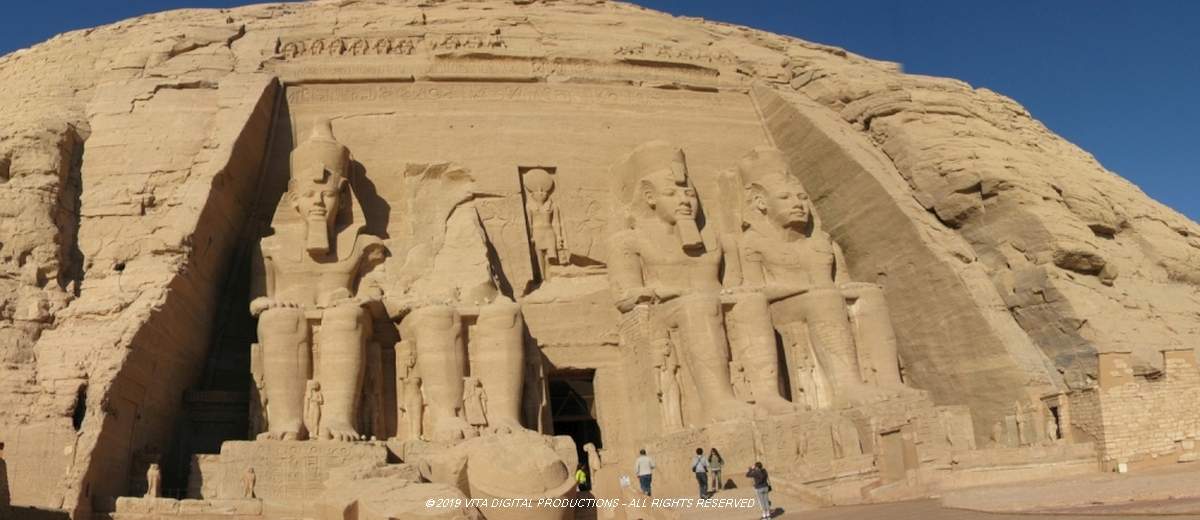
The salvage of the Abu Simbel temples began in 1964 by a multinational team of archeologists, engineers and skilled heavy equipment operators working together under the UNESCO banner; it cost some USD $40 million at the time (equal to $300 million in 2017 dollars). Between 1964 and 1968, the entire site was carefully cut into large blocks (up to 30 tons, averaging 20 tons), dismantled, lifted and reassembled in a new location 65 meters higher and 200 meters back from the river, in one of the greatest challenges of archaeological engineering in history.
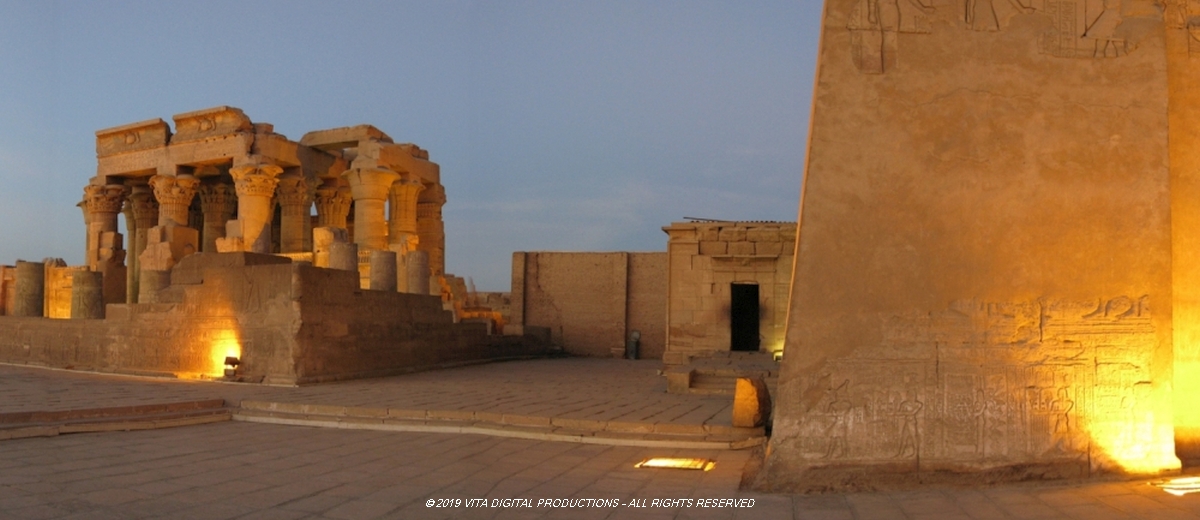
Other stops on our cruise were Kom Ombo and Edfu. The Temple of Kom Ombo is an unusual double temple constructed during the reign of the Ptolemies, 180–47 BC. The building is unique because its 'double' design meant that there were courts, halls, sanctuaries and rooms duplicated for two sets of gods : Sobek, the crocodile god; and Horus, the falcon god.
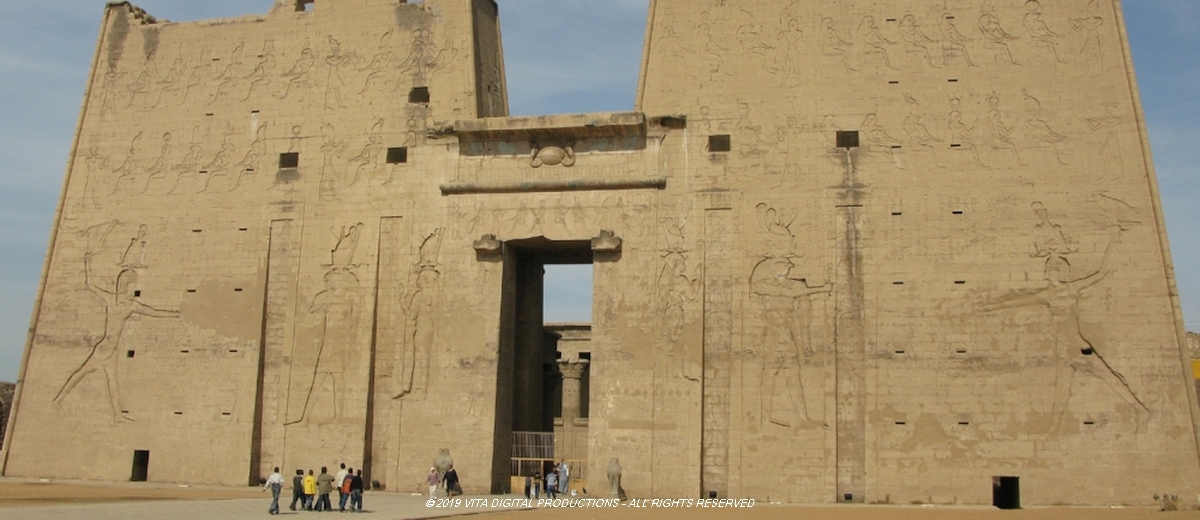
Edfu is located on the west bank of the Nile in Upper Egypt. The temple is the largest one dedicated to Horus and Hathor of Dendera.
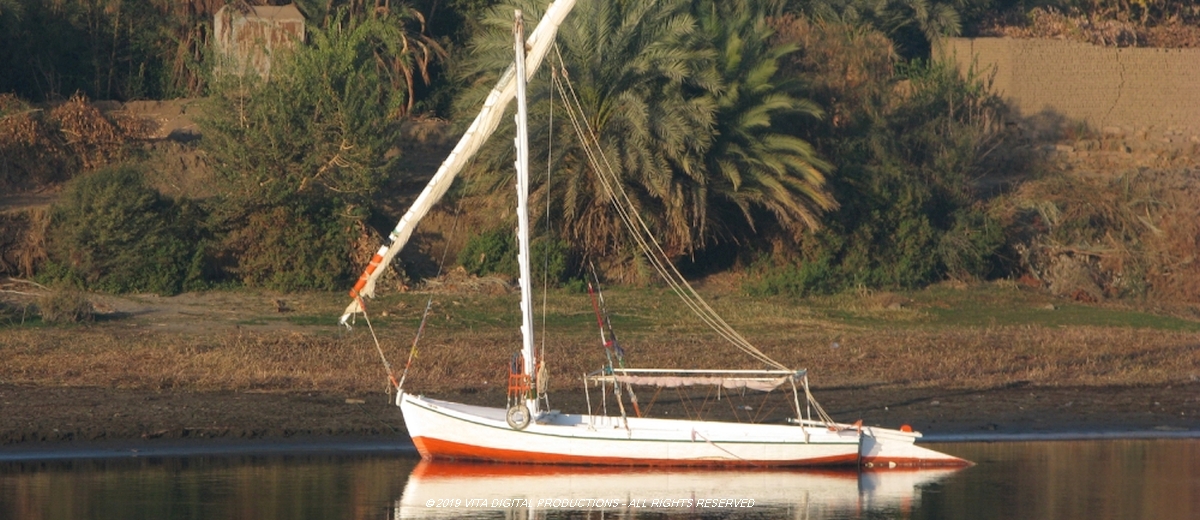
TRAVEL TIP: be in the know when you're traveling in Egypt and be aware that the Nile River flows south to north. In ancient times, the north was known as Lower Egypt and the south was designated as Upper Egypt.
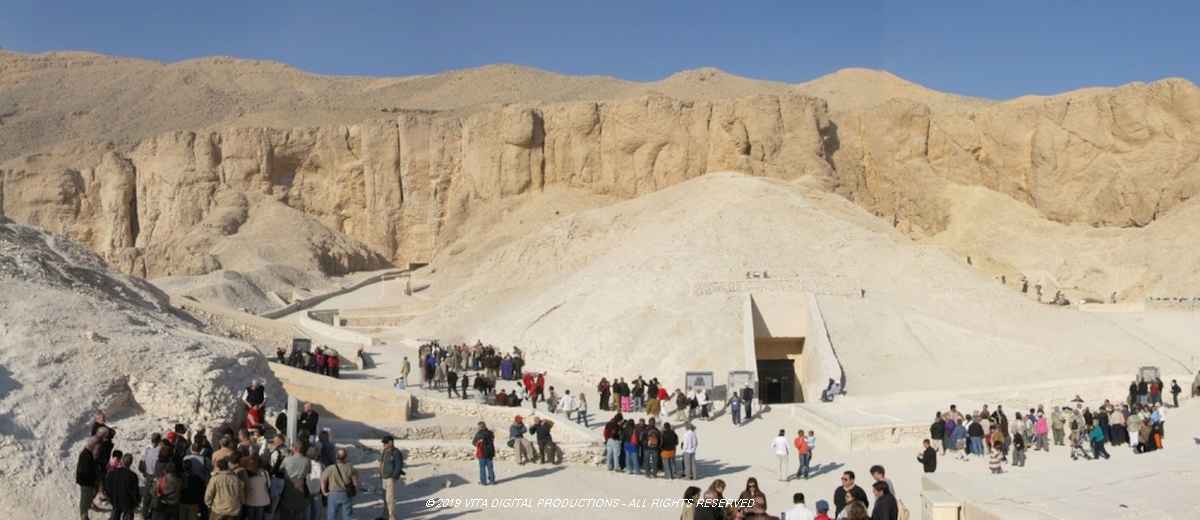
We finally reached the place which many of us anticipated: the Valley of the Kings and the Valley of the Queens. Dendera, Luxor, and the grandest of them all...
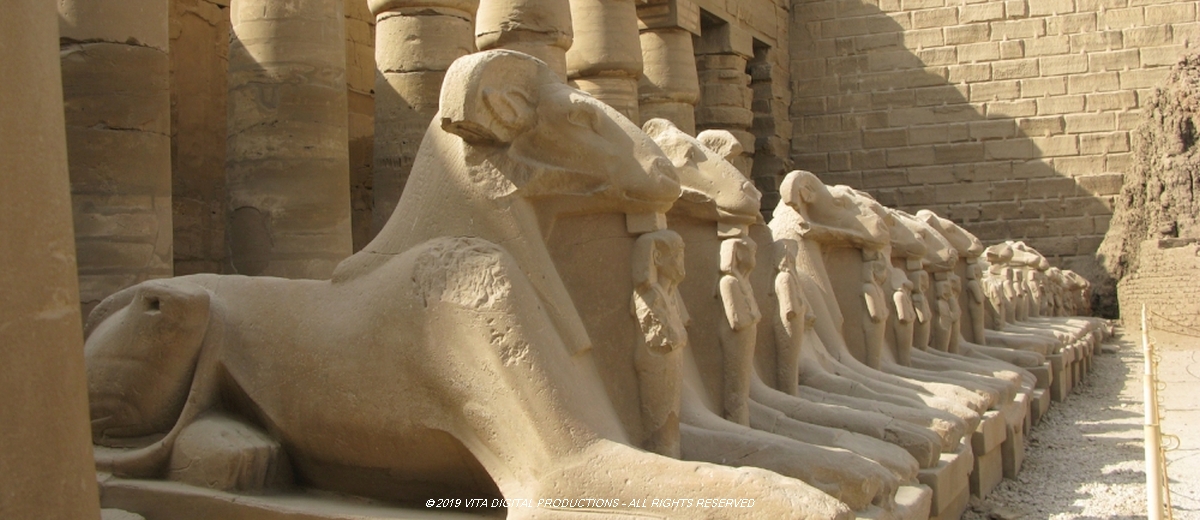
... the Temple of Karnak. Wayne and I opted to extend our time at Karnak after the tour departed, and we absolutely made the right decision. Usually we're side by side all the way through one of our overseas trips since we travel independently; when planning our trip to the Middle East, however, we felt that we would benefit from the experience and the expertise of a professional Egyptologist as our guide. On this trip, Wayne would often take off on his own to film and I would stay close to Amin to soak up his vast and enthusiastic knowledge about his home country.
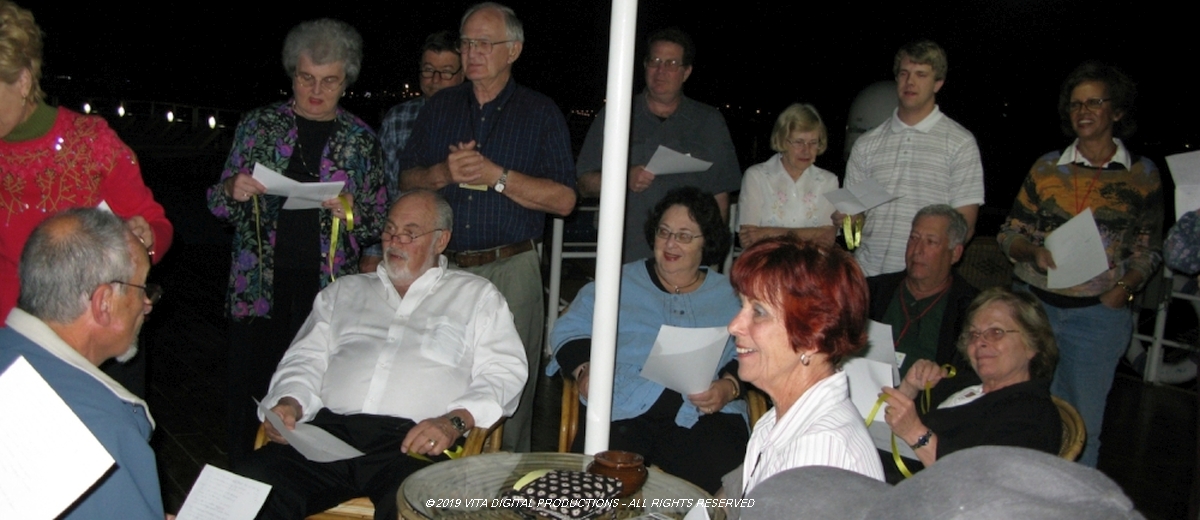
In the evenings back on board we would share his visual treasures and my educational discoveries, so we felt we were getting the best of both worlds.
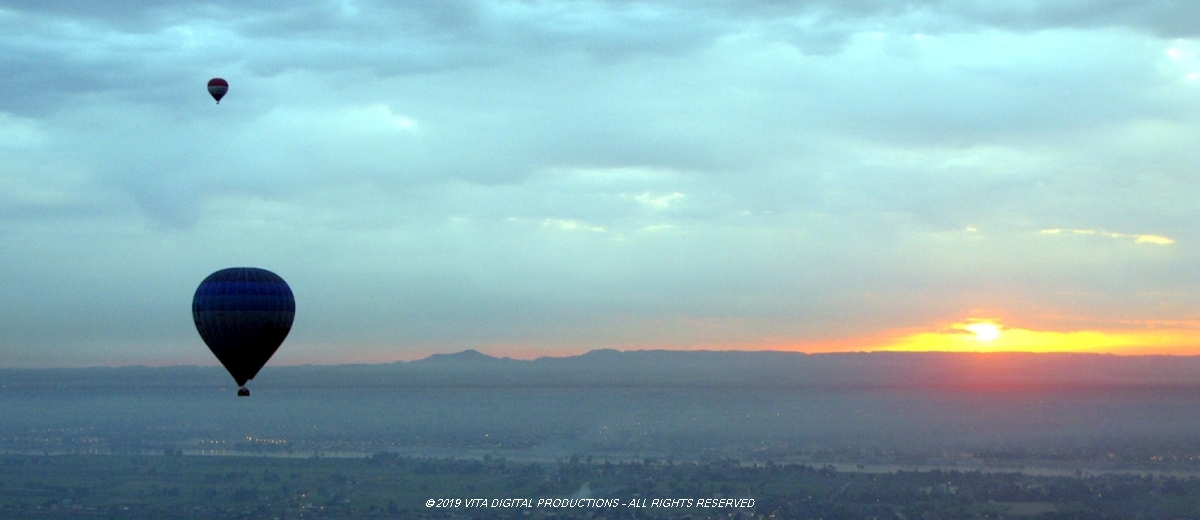
A word needs to be added about a few other noteworthy takeaways from this outstanding trip: the hot air balloon ride at sunrise in the Valley of the Kings...
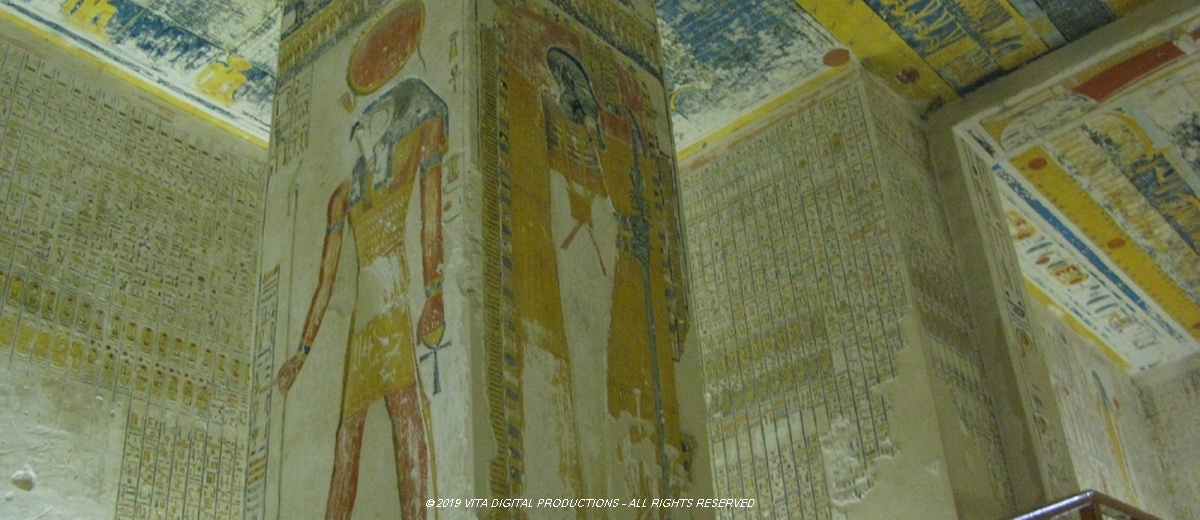
... and gaining entrance to and seeing the gorgeous and colorful tomb decorations of the recently-opened tomb of Ramesses VI...
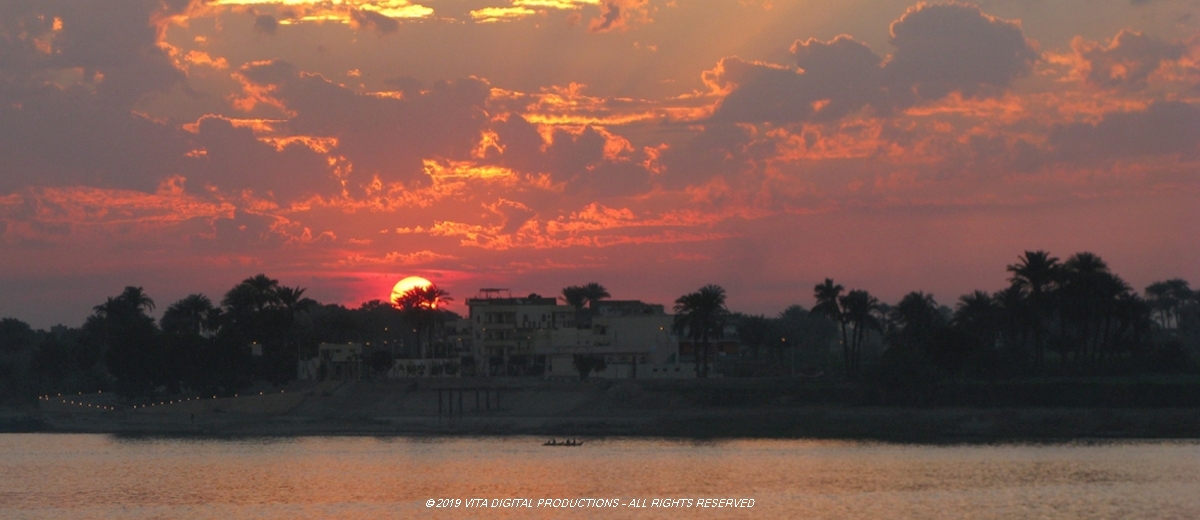
... and seeing the sun set and photographing each stage of Ra's luminous magnificence with the 12 MP Canon camera from the top deck of the MS Anuket.
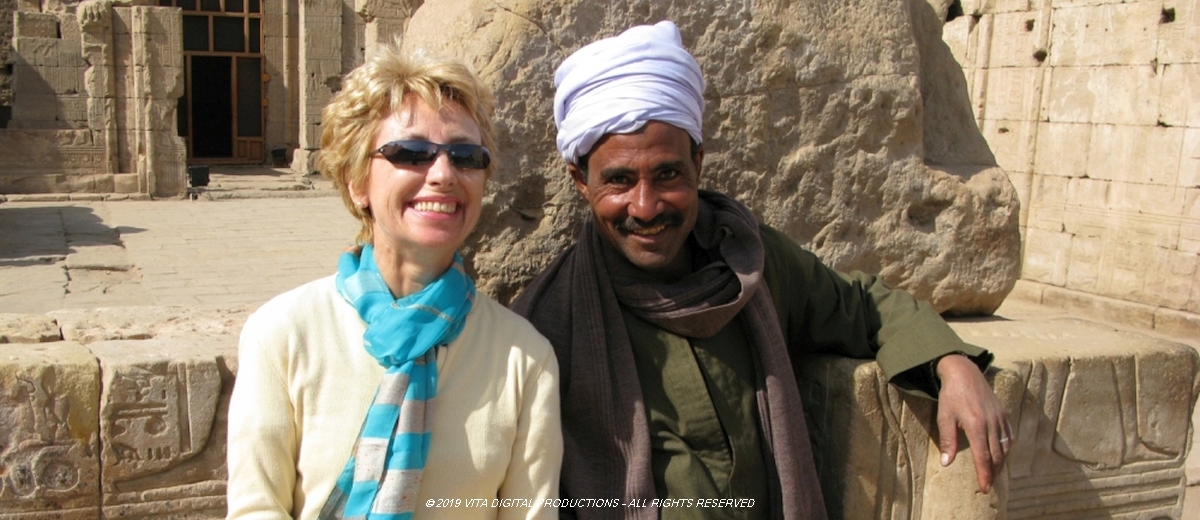
But without doubt the best memory of all was meeting and talking with various natives of Egypt and being reminded that there are kind and gracious men, women and children in all corners of the world!
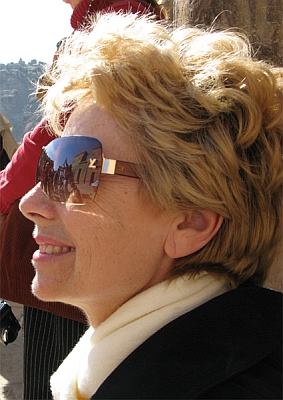
About the Author - Kathi Jacobs and her husband, Wayne, are the owners of VITA Digital Productions, a video production company specializing in creating Virtual Walks, Virtual Jogs, Virtual Cycling Scenery, and Virtual Cruises on scenic rivers. With over 50 different Virtual Experience Videos to choose from on vitadvds.com, VITA Digital Productions is the leading producer of Virtual Experience Videos in the world.